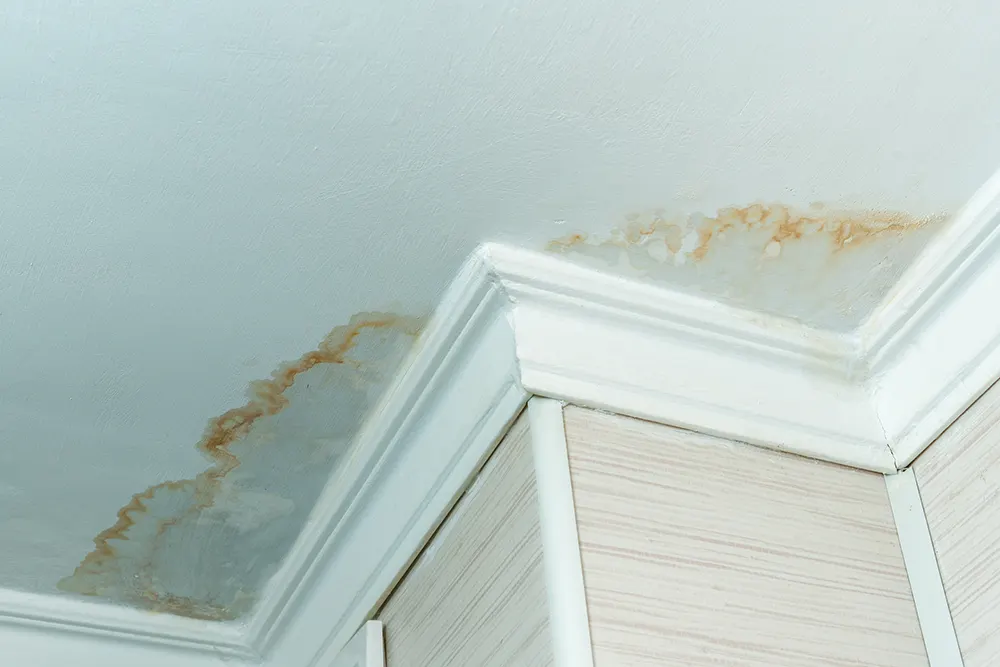Water leaks can be a costly and frustrating problem for homeowners. Whether it’s a dripping faucet, a leaking pipe, or even a malfunctioning air conditioner, unnoticed leaks can lead to higher utility bills, water damage, and the growth of mold and mildew. In this blog, we’ll explore how to identify and prevent water leaks in your home, including those that might be coming from your air conditioning unit.
Common Signs of Water Leaks
Before diving into prevention, it’s important to recognize the signs of water leaks. Here are some of the most common indicators:
1. Unusually High Water Bills: If your water bill has spiked without an increase in usage, this may be a sign of a hidden leak.
2. Water Stains on Walls or Ceilings: Discoloration or wet spots on walls, ceilings, or floors can indicate a leak from a pipe or roof.
3. Damp or Musty Smell: If you detect a musty smell in a specific area, it could be a sign of mold growth caused by a hidden leak.
4. Pooling Water: Puddles around your home’s foundation, under sinks, or near appliances like your air conditioner can indicate a leak.
5. Sound of Running Water: Hearing water when no faucets or appliances are running is often a sign of a leak within the plumbing.
How to Find Water Leaks
Detecting water leaks early can save you from costly repairs. Here’s how to check for leaks throughout your home:
1. Check Your Water Meter
One of the easiest ways to determine if you have a hidden leak is to monitor your water meter:
- Turn off all faucets and appliances that use water (such as washing machines and dishwashers).
- Check your water meter and note the reading.
- Wait a few hours (without using any water) and check the meter again.
- If the reading has changed, you likely have a leak somewhere in your plumbing system.
2. Inspect Faucets, Toilets, and Showerheads
Leaky faucets and toilets are common culprits for wasted water. Here’s how to inspect them:
- Faucets: Look for visible drips or listen for the sound of water trickling, even when the faucet is off.
- Toilets: Add a few drops of food coloring to the toilet tank and wait about 30 minutes without flushing. If the color shows up in the bowl, you have a leak in the flapper valve.
- Showerheads: Dripping showerheads can often be fixed by replacing the washer or tightening the connections.
3. Check for Leaky Pipes
Look under sinks, behind appliances, and in crawl spaces for any signs of leaking pipes. Pay attention to water stains or dampness on walls, floors, or ceilings.
4. Inspect the Water Heater
A leaky water heater can cause significant damage. Check around the base of the water heater for pooling water, which may indicate a leak.
5. Air Conditioner Leaks
An often-overlooked source of water leaks is your air conditioning unit. Air conditioners remove moisture from the air as they cool, and this moisture typically drains through a condensate line. If the line becomes clogged, the water can back up and leak into your home.
Here’s how to check for and prevent AC-related leaks:
- Check for Puddles: Look around the base of your AC unit for standing water or moisture. If you find any, your condensate drain may be blocked.
- Inspect the Air Filter: A dirty air filter can cause the AC coils to freeze, leading to excess water when they thaw. Regularly changing the filter can help prevent this issue.
- Clear the Condensate Line: Over time, algae and debris can clog the condensate drain line. You can use a wet/dry vacuum to clear out the blockage or have a professional HVAC technician service your unit.
How to Prevent Water Leaks
Now that you know how to find leaks, let’s talk about how to prevent them:
1. Regular Maintenance
Routine inspection and maintenance are key to preventing leaks:
- Inspect Pipes: Regularly check exposed pipes for any signs of wear, corrosion, or dripping. Replace any parts that appear damaged.
- Maintain Your AC Unit: Clean or replace the air filters monthly, and have the condensate drain line professionally cleaned every year.
- Check Appliances: Periodically inspect washing machines, dishwashers, and refrigerators for leaks or hose cracks. Replace old hoses to prevent failure.
2. Install Water Leak Detection Devices
Installing water leak detectors can provide early warnings of leaks in your home. These devices can be placed near appliances, under sinks, and in areas prone to leaks. Some systems even offer smart features that alert you via your phone if a leak is detected.
3. Insulate Your Pipes
In cold climates, insulating your pipes can prevent freezing and bursting, which can lead to significant water damage. Pipe insulation is a relatively inexpensive and effective way to protect your plumbing.
4. Replace Old Plumbing
If your home has older plumbing, it might be worth considering replacing aging pipes. Over time, pipes can corrode or weaken, leading to leaks. A licensed plumber can assess your plumbing system and suggest if any replacements are necessary.
5. Clear Gutters and Downspouts
Maintaining your gutters and downspouts is crucial to prevent water from pooling around your home’s foundation, which can cause leaks and water damage. Regularly clear debris from gutters and ensure downspouts direct water away from your home.
Trust The Experts To Help You Prevent Water Leaks
Water leaks can cause more than just higher water bills – they can lead to extensive and expensive damage. Whether it’s a hidden plumbing issue or a malfunctioning air conditioner, detecting and preventing leaks early can save you time, money, and stress. By staying vigilant and performing routine inspections and maintenance, you can keep your home leak-free and ensure your water systems and appliances run efficiently.
If you suspect a water leak but can’t locate the source, consider reaching out to a professional like Swift Brothers for assistance. They have the tools and expertise to detect even the most elusive leaks and help protect your home from further damage.



